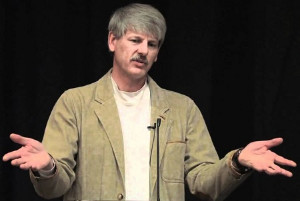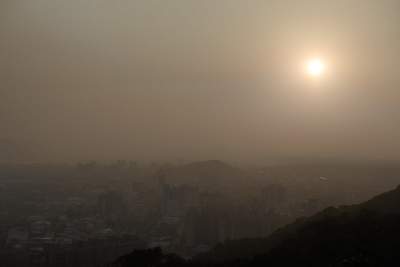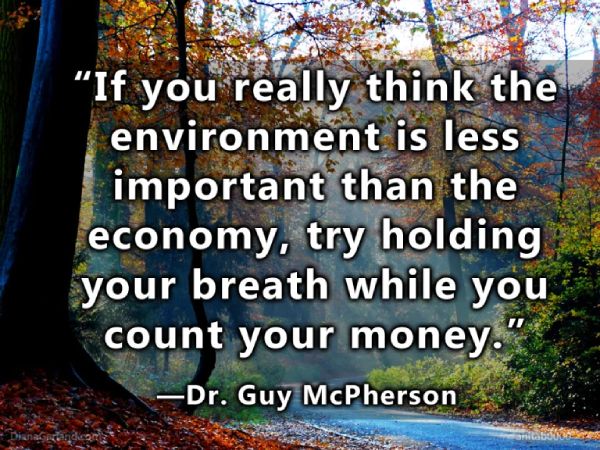Image by Max HY Chen (license)
Small lives matter. Indeed, the “human body contains about 100 trillion cells, but only maybe one in 10 of those cells is actually
— human” [1]. We are comprised of bacteria and other tiny living organisms, as well as non-living entities such as viruses. One such virus has captured the attention of the world, and with good reason. The novel coronavirus could trigger extinction of humans, and therefore the extinction of all life on Earth. I frequently hear and read that COVID-19 is a nefarious attempt by the so-called “elite” among us to depopulate the burgeoning human population on Earth.
Other conspiracy theories abound, including COVID-19 as an attempt to further reduce human rights, promote expensive medical therapies, and otherwise enrich the wealthy at the expense of the bamboozled masses. I do not doubt the ability of the informed wealthy to fl the ignorant masses. Nor do I doubt the ability of the informed wealthy to turn virtually any situation into an opportunity for monetary gain. A quick glance at the past two centuries provides plenty of examples. However, I doubt the monetarily wealthy among us are interested in accelerating human extinction, even for financial gain.
As I explain below, the ongoing reduction in industrial activity as a result of COVID-19 almost certainly leads to loss of habitat for human animals, hence putting us on the fast track to human extinction. I doubt the knowledgeable “elite” are interested in altering the sweet deal they are experiencing with the current set of living arrangements.
The aerosol masking effect, or global dimming, has been described in the peer-reviewed literature since at least 1929 [2, 3]. Coincident with industrial activity adding to greenhouse gases that warm the planet, industrial activity simultaneously cools the planet by adding aerosols to the atmosphere. These aerosols block incoming sunlight, thereby keeping cool our pale blue dot.
Reducing industrial activity by as little as 35 percent is expected to cause a global-average temperature rise of 1 degree Celsius within a few weeks, according to research on the aerosol masking effect [4]. Such research was deemed collectively too conservative by a paper in the 17 January 2019 issue of Science [5]. As pointed out by the lead author of the latter paper on 22 January 2019 “Global efforts to improve air quality by developing cleaner fuels and burning less coal could end up harming our planet by reducing the number of aerosols in the atmosphere, and by doing so, diminishing aerosols’ cooling ability to offset global warming” [6].
The cooling effect is “nearly twice what scientists previously thought,” and the paper by Rosenfeld et al. [5] cites the conclusion by Levy et al. [4], indicating as little as 35% reduction in industrial activity drives a 1 C global-average rise in temperature, thereby suggesting that as little as a 20% reduction in industrial activity will drive a 1 C spike in temperature within a few weeks [7]. Additional, recent support for the importance of the aerosol masking effect comes from [8, 9]. Furthermore, loss of aerosols exacerbates heat waves [10].
Human extinction might have been triggered several years ago when the global-average temperature of Earth exceeded 1.5 C above the 1750 baseline. According to a comprehensive overview published by European Strategy and Policy Analysis System in April, an “increase of 1.5 degrees is the maximum the planet can tolerate;… at worst, [such a rise in temperature above the 1750 baseline will cause] the extinction of humankind altogether” [11, 12]. Earth’s global-average temperature hit 1.73 C above the 1750 baseline by April, 2018 the highest global-average temperature experienced by Homo sapiens on Earth [13, 14].
By 13 March 2020, 2 C above the 1750 baseline was crossed [11]. In other words, human extinction via the death-by-a-thousand- cuts route might be locked in with no further heating of Earth. In light of the ongoing pandemic, the ongoing Mass Extinction Event, and abrupt, irreversible climate change, it is pleasantly surprising that humans still occupy Earth. The pandemic-induced reduction in industrial activity may have already reduced the aerosol masking effect sufficiently to trigger a 1 C temperature spike. The outcome is not yet obvious because the timing of the outbreak of the novel coronavirus was favorable for human habitat.
Trees produced leaves in the Northern Hemisphere spring of 2020 as a result of carbohydrates stored the previous year and grain crops were harvested before the novel coronavirus emerged. Results of the recent and ongoing rise in temperature, which have already been reported in China and India, will become obvious to most humans when many more trees die. Large-scale die-off of trees likely will approximately correspond with catastrophic crop failure. This might occur by the end of this year, although I would rather it not.
Every civilization requires bread and circuses. There is little doubt the circuses attendant to industrial civilization will continue until the end of the planetary show for Homo sapiens. Bread, however, requires wheat. Wheat production requires a delicate balance of growing conditions that, like habitat for humans, teeters on the brink [15]. The path to near-term human extinction thus runs from a tiny virus underlying a pandemic through a reduction of industrial activity that overheats a planet already running a fever.
The outbreak of COVID-19 could very well be the event that accelerates human extinction via reduction of industrial activity, hence loss of habitat for Homo sapiens. As a result of the rapid environmental change likely to follow, we are almost certain to lose all life on Earth [16]. History is replete with examples of human hubris. We thought we were mighty, and we certainly have left our mark on Earth. How embarrassing for the big-brained human species that a microscopic virus could pull the trigger on our extinction [15].
References
-
Stein R (2012) Finally a map of all the microbes on your body. NPR, 13 June 2012.
-
Ångström A (1929) “On the Atmospheric Transmission of Sun Radiation and on Dust in the Air,” Geografiska Annaler 11: 156-166.
-
McPherson GR (2019) “Going halfway: Climate reports ignore the full evidence, and therapists ignore grief recovery. Clinical Psychology Forum 321: 28-31.
-
Levy H II, LW Horowitz, MD Horowitz, MD Schwarzkopf, Y Ming, et al. (2013) “The roles of aerosol direct and indirect effects in past and future climate change,” JGR Atmospheres 118: 4521-4532.
-
Rosenfeld D, Y Zhu, M Wang, T Goren, S Yu, et al. (2019) “Aerosol-driven droplet concentrations dominate coverage and
water of oceanic low-level clouds,” Science 363: 1-9.
-
The Hebrew University of Jerusalem (2019) “We need to rethink everything we know about global warming: New calculations show scientists have grossly underestimated the effects of air pollution.” ScienceDaily, 22 January 2019.
-
Fagan L (2019) “Cooling from atmospheric particles may mask greater warming,” Sustainability Times, 25 January 2019.
-
Chakraborty T, X Lee (2019) “Land cover regulates the spatial variability of temperature response to the direct radiative effect of aerosols,” Geophysical Research Letters 46: 8995-9003.
-
Hasekamp OP, E Gryspeerdt, J Quaas (2019) “Analysis of polarimetric satellite measurements suggests stronger cooling due to aerosol-cloud interactions,” Nature Communications 10: 1-7.
-
Zhao A, MA Bollasina, DS Stevenson (2019) Strong infl of aerosol reductions on future heatwaves, Geophysical Research Letters 46: 4913-4923.
-
Carana S (2019) “2°C crossed,” Arctic News Blog, 13 March 2020, https://arctic-news.blogspot.com/2020/03/2c-crossed. html
-
Gaub F (2019) “Global Trends to 2030: Challenges and Choices for Europe,” European Strategy and Policy Analysis System.
-
Carana S (2018) “How much warmer is it now?” Arctic News Blog, 2 April 2018, http://arctic-news.blogspot.com/2018/04/ how-much-warmer-is-it-now.html
-
Hansen J, M Satato, P Kharecha, K von Schuckmann, DJ Beerling, et al. (2017) “Young people’s burden: requirement of negative CO2 emissions,” Earth Systems Dynamics 8: 577-616.
-
McPherson GR (2019) Only Love Remains: Dancing at the Edge of Extinction. Woodthrush Productions, New York.
-
Strona G, CJA Bradshaw (2018) Co-extinctions annihilate planetary life during extreme environmental change. Scientifi Reports 8, Article 16724 :1-12.
Author Dr. Guy McPherson is an internationally recognized speaker, award-winning scientist, and the world’s leading authority on abrupt climate change leading to near-term human extinction. He is professor emeritus at the University of Arizona. His published works include more than a dozen books and hundreds of scholarly articles. Dr. McPherson has been featured on television and radio and in several documentary films. He is a blogger, cultural critic, and co-host of his own radio show “Nature Bats Last.” Dr. McPherson speaks to general audiences around the globe, and to scientists, students, educators, and not-for-profit and business leaders who seek their best available options when confronting Earth’s cataclysmic changes. Published February, 2019: McPherson, Guy R. 2019. Only Love Remains: Dancing at the Edge of Extinction. Woodthrush Productions, New York.
Dr. Guy McPherson is an internationally recognized speaker, award-winning scientist, and the world’s leading authority on abrupt climate change leading to near-term human extinction. He is professor emeritus at the University of Arizona. His published works include more than a dozen books and hundreds of scholarly articles. Dr. McPherson has been featured on television and radio and in several documentary films. He is a blogger, cultural critic, and co-host of his own radio show “Nature Bats Last.” Dr. McPherson speaks to general audiences around the globe, and to scientists, students, educators, and not-for-profit and business leaders who seek their best available options when confronting Earth’s cataclysmic changes. Published February, 2019: McPherson, Guy R. 2019. Only Love Remains: Dancing at the Edge of Extinction. Woodthrush Productions, New York.









